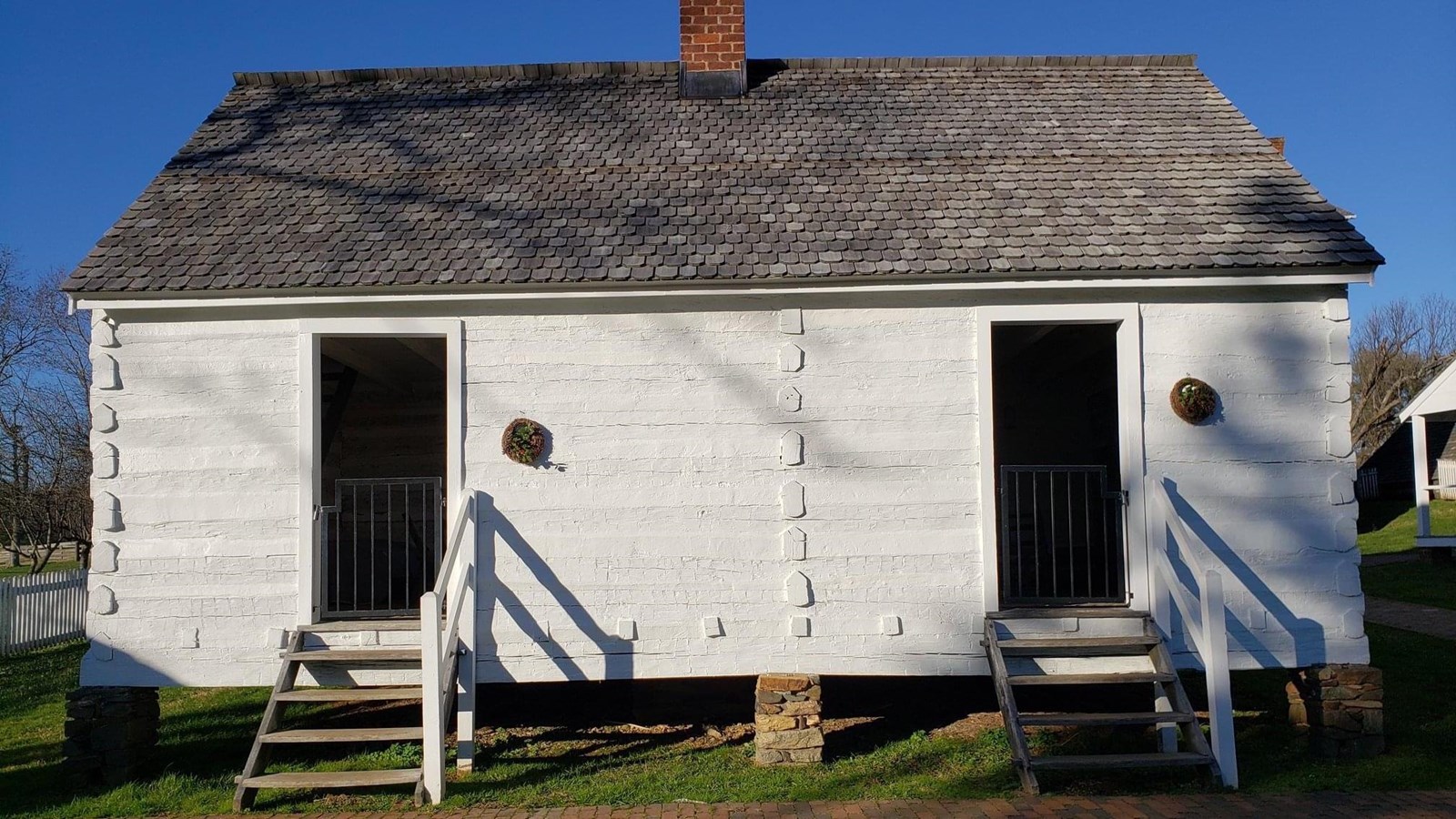Last updated: October 10, 2024
Place
Enslaved Peoples’ Quarters/Summer Kitchen

NPS Image
At least nine enslaved people lived in the small white buildings behind the McLean House at the time of the surrender. Bettie Love Stewart and her four children worked alongside Mary Ann and her three children as caretakers of the McLean home. In addition to cooking the family’s meals, they took care of the McLean children, maintained the house, and looked after the family’s animals. Emancipation brought a mixture of hope and uncertainty for formerly enslaved people in the wake of Lee’s surrender. Following the war, Bettie moved to Lynchburg with her husband, Henry, who worked as a brakeman on the Atlantic, Mississippi, and Ohio Railroad. Her children went on to live in Lynchburg, New York, and Boston.
For the enslaved people of Appomattox County, April 9, 1865 was Freedom Day. This was the first appearance of Federal troops in this part of Virginia, and following Lee’s surrender, Federal soldiers enforced the Emancipation Proclamation in Southside Virginia. As other U.S. forces restored Federal authority throughout the South, their arrival signaled freedom for those still held in bondage. When Major General Gordon Granger announced that all enslaved people in the state of Texas were to be freed on June 19, 1865, it signaled the end of slavery in formerly Confederate-held territory. That December, the 13th Amendment was ratified, putting a formal end to slavery in the United States.
For the enslaved people of Appomattox County, April 9, 1865 was Freedom Day. This was the first appearance of Federal troops in this part of Virginia, and following Lee’s surrender, Federal soldiers enforced the Emancipation Proclamation in Southside Virginia. As other U.S. forces restored Federal authority throughout the South, their arrival signaled freedom for those still held in bondage. When Major General Gordon Granger announced that all enslaved people in the state of Texas were to be freed on June 19, 1865, it signaled the end of slavery in formerly Confederate-held territory. That December, the 13th Amendment was ratified, putting a formal end to slavery in the United States.
